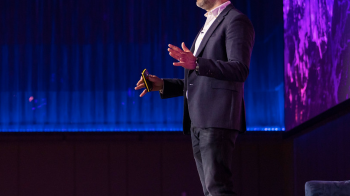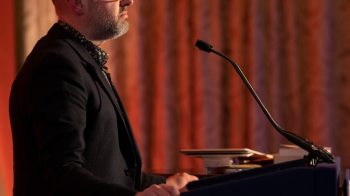Direct Line Group on it's Social media strategy
Direct Line: why social media works for us
Social media is a very fluid medium, and one that is constantly changing. It’s one of the reasons that makes it so dynamic to work with. So, the announcement back in April that a major brand seeking to communicate and engage with younger audiences is reigning in its social presence – at least in the UK – has rather set tongues wagging.
Most of us recognise that organic reach and engagement has declined along with the maturation of the medium and the continual tweaks to different platforms’ structures. Most brands would acknowledge that we also typically operate in a pay-to-play environment, one which most consumers use for tight friendship groups and close relationships. But not Lush – which has decided to take a stand against algorithms and instead conduct its conversations with customers one-to-one, through live chat and offline over the phone. The move came almost a year after pub chain Wetherspoons made the same move to come off all social platforms.
It’s hard to deny that social is more difficult for brands than it used to be. Social teams are constantly battling with changes to the platforms themselves: algorithms, increased competition and of course competitor activity. We’re not strangers to this in insurance – still one of the most expensive terms to compete on is PPC, let alone on social. To stand out effectively requires a dedication of adequate social brand and direct response media spend, as well as sufficient measurement and attribution modelling with the likes of a brand or conversion lift study. This investment can facilitate proper management and response through the channels their customers are using, with audience-first creative approaches and dedicated social teams that are experts in their field. It’s far from an easy task, but for us, social media remains strategically and tactically important across our entire suite of brands.
As a key function of our Direct Line Fixer mentality and Green Flag’s brand promise of ‘Common Sense To The Rescue’, we need to be there for customers how and when they need us, and for many customers these days, that route to quick advice and brand feedback is through social. It gives us an essential pipeline of customer feedback which we can escalate directly into the business and allow us to innovate and grow. Having an active presence on social indicates to our consumers that we are focussed on creating a thriving community with multi-way conversations. Good or bad, we want to know so we can address issues. We are customer-first and enabling this two-way conversation is important to us. This will, in turn, increase customer loyalty as we are not faceless. A brand that values its customers and takes time to respond personally is always rewarded with healthier customer satisfaction scores (NPS). In our category, and for our brand DNA, social is an essential part of our mix. Of course, beyond being an essential customer communication and response tool, it also helps us to feed our digital footprint elsewhere with increased traffic to our websites and blogs, and contributes directly to our conversion.
Finally, social is important to our brand due to our responsibility to our customers. We have to deal with highly sensitive issues at times and some of our customers express those through social – we have to have a robust escalation process in place to handle these occurrences. We also have a responsibility to our brand and audiences alike to flag individuals acting inappropriately online, either with brand and trademark infringement or ghost brokering, which can damage both customers and ourselves.
Stepping away from social is a bold move, and I suspect it’s a step too far for many other brands, especially when social channels are so interwoven with other mechanics. For Lush, its social channels were more than the brand message; it’s also the people who work for them, buy from them, and align with their narrative on ethical issues. It will be interesting to see how, over time this strategy plays out, and what lies behind it.
Related content
AA/WARC: UK ad market grows 6.1% in 2023 lead by digital
Learn moreDigital Adspend 2023: Digital ad market grows 11% to £29.6bn
Learn moreGoogle postpones third-party cookie phase out: Statement from our CEO Jon Mew
Learn moreSurge in CTV & podcast spend as advertisers tap into popularity of online entertainment
Learn more
Rediscover the joy of digital advertising
Champion connections instead of clicks. Capture audiences' imaginations, not just their attention. Boldly move to your own beat instead of letting tech set the pace. It’s time to rediscover the joy of digital.



